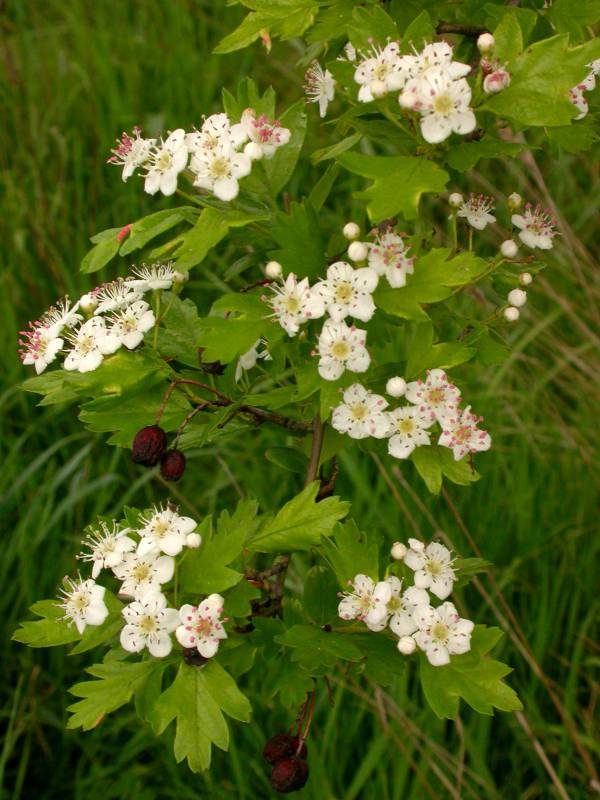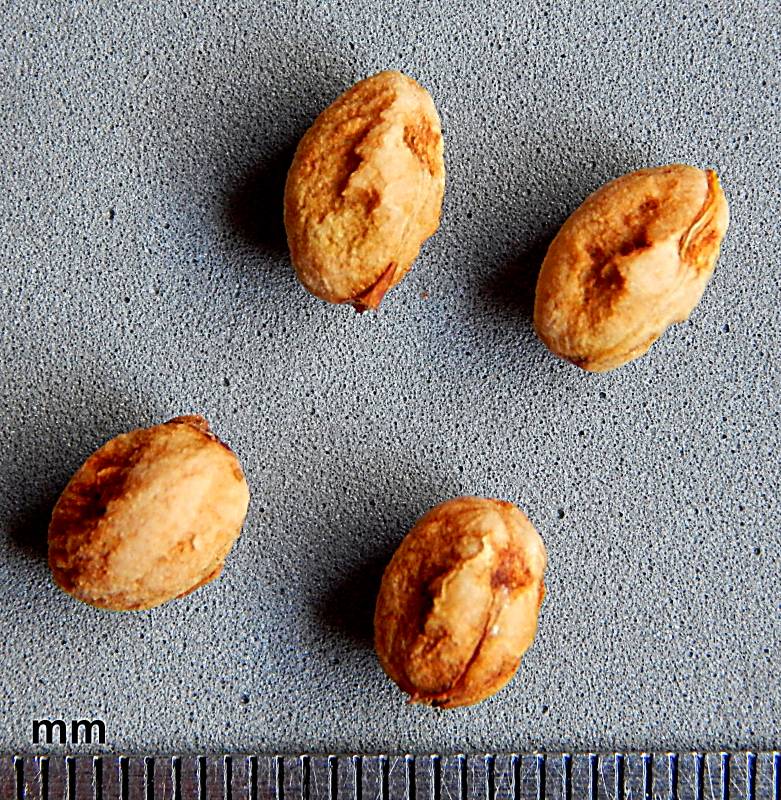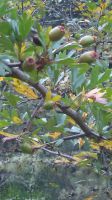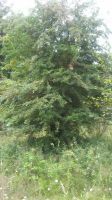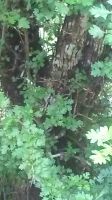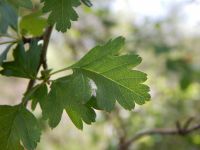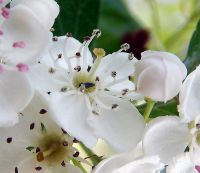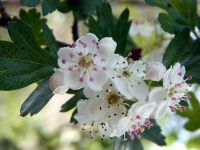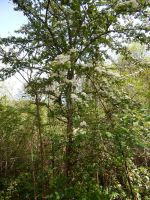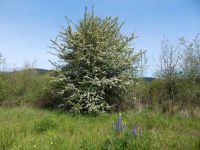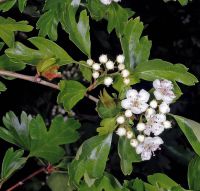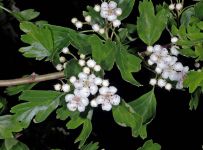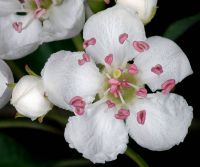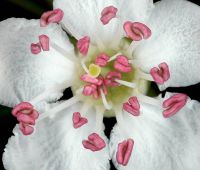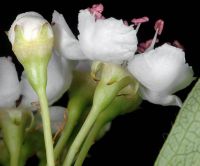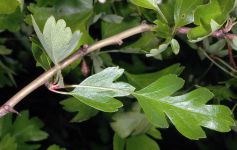Distribution: Occurring chiefly west of the Cascades crest in Washington; southern British Columbia to California, east to Montana, also in the Great Lakes region and eastern North America.
Habitat: Roadsides, fields, pastures, meadows, thickets, and forest edge and understory at low elevations, often associated with disturbance. Seeds readily dispersed by birds.
Flowers: April-June
Origin: Introduced from Eurasia and North Africa
Growth Duration: Perennial
Conservation Status: Not of concern
Glabrous, thorny, deciduous small shrub or tree, 2-10 m. tall. Thorns continue to grow as short thorn-tipped branches with leaves budding from the sides of the thorns.
Leaves ovate, deeply 3-lobed more than halfway to the midrib, 2.5-5 cm. long and nearly as broad.
Inflorescence a broad, dense, flat-topped cluster; flowers 8-15 mm. wide, the petals white; style 1.
Fruit a crimson berry, globose, 7-10 mm. in diameter, with single large seed.
Publication: Fl. Austriac. 3: 50, pl. 292, f.1. 1775.
PNW Herbaria: Specimen records of Crataegus monogyna var. monogyna in the Consortium of Pacific Northwest Herbaria database
WA Flora Checklist: Crataegus monogyna var. monogyna checklist entry
OregonFlora: Crataegus monogyna var. monogyna information
E-Flora BC: Crataegus monogyna var. monogyna atlas page
CalPhotos: Crataegus monogyna var. monogyna photos

